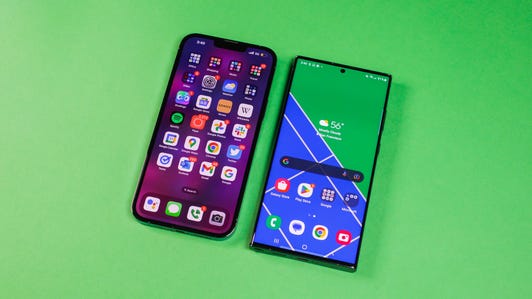Technologies
iPhone 14 Pro vs. Galaxy S23 Ultra: This Ex-Android Lover Has Thoughts
Do I regret switching to Apple?
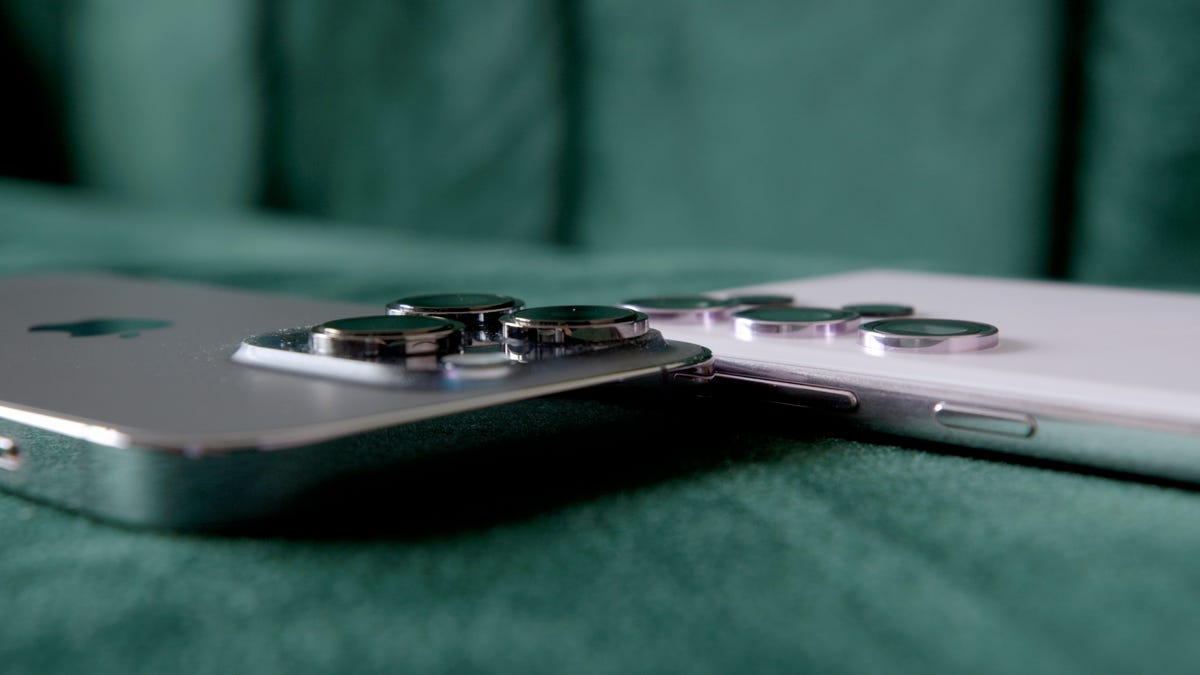
This story is part of Samsung Event, CNET’s collection of news, tips and advice around Samsung’s most popular products.
Five months ago, I went from being a die-hard Samsung Galaxy fan to a sellout iPhone owner. Since then, I’ve fully adapted to the world of Apple and have been basking in the perks of features like AirDrop and iMessage (mostly to the delight of my friends, who were sick of my green texts).
But I still have a soft spot for Galaxy phones, and when Samsung unveiled the S23 lineup in February, I was eager to see how the top-of-the-line S23 Ultra would compare to my iPhone 14 Pro. So I got my hands on one and began using the phones side by side to compare everything from the cameras to battery life to overall design — and to see whether I’d have any regrets about switching to the «dark side.» Here’s what I found.
The Galaxy S23 Ultra’s display vs. Apple’s Super Retina screen
First things first: I have an iPhone 14 Pro, and not a Pro Max, so the Ultra’s massive screen definitely stands out in comparison. I never feel like I need a bigger screen than what I get on my 14 Pro, but it definitely doesn’t hurt to have that larger display when I’m watching a YouTube video or streaming a show — or spending too much time on TikTok.
The trade-off to having that larger screen is trying to fit it in my pocket and having to carry something a bit bulkier. Still, it’s a pretty sleek phone for all that real estate.
The display quality on both phones is stellar, and I don’t see much of a quality difference between the two. Right out of the box, the S23 Ultra has a nice bright display, which you can achieve on the iPhone by turning off True Tone (a feature that adjusts the color and intensity of your display depending on your environment). If the brightness on the Ultra is too much, you can inversely mimic the effects of True Tone by going into Display settings and either toggling on Eye comfort shield or going to Screen mode and selecting Natural. You can also play with the White balance scale. Images on the iPhone look slightly sharper, but colors pop a bit more on the S23 Ultra. Overall, though, there’s really not much of a difference between the phones.

The keyboard on the Galaxy S23 Ultra (right) places numbers above letters, so you don’t have to hop between the two.
John Kim/CNETThere’s one aspect to having an iPhone that I haven’t quite made peace with yet, and it’s the keyboard. I’m glad Apple added Slide to Type with iOS 13 a few years ago, followed by haptic feedback on the keyboard with iOS 16 (finally), because those are features I loved on Android. But I still get frustrated that I have to switch between numbers and letters when I’m typing on the iPhone. Meanwhile, on the Galaxy, the numbers sit just above the letters, so you can select them more quickly, the way you would on a laptop keyboard. You can download different keyboards on the iPhone like Gboard, but it’s not the same. I’ll admit that’s a minor complaint, but I do think the user experience would benefit from Apple taking a page from Android’s book — you know, like they’ve done many times before. Moving on….
The Galaxy S23 Ultra’s battery life is next level
I’ve had my iPhone for a few months now and thankfully haven’t seen any noticeable drops in battery life yet. My phone still lasts a full day of heavy use, but I always need to charge at the end of the day.
The Ultra’s battery is next level. I can go a full day of use and still have some juice left over. That’s not surprising, given the S23 Ultra has a 5,000-mAh battery. Apple doesn’t share battery capacity for its phones, but says the 14 Pro has up to 23 hours of video playback. An iFixit teardown found the iPhone 14 Pro has a 3,200-mAh battery.
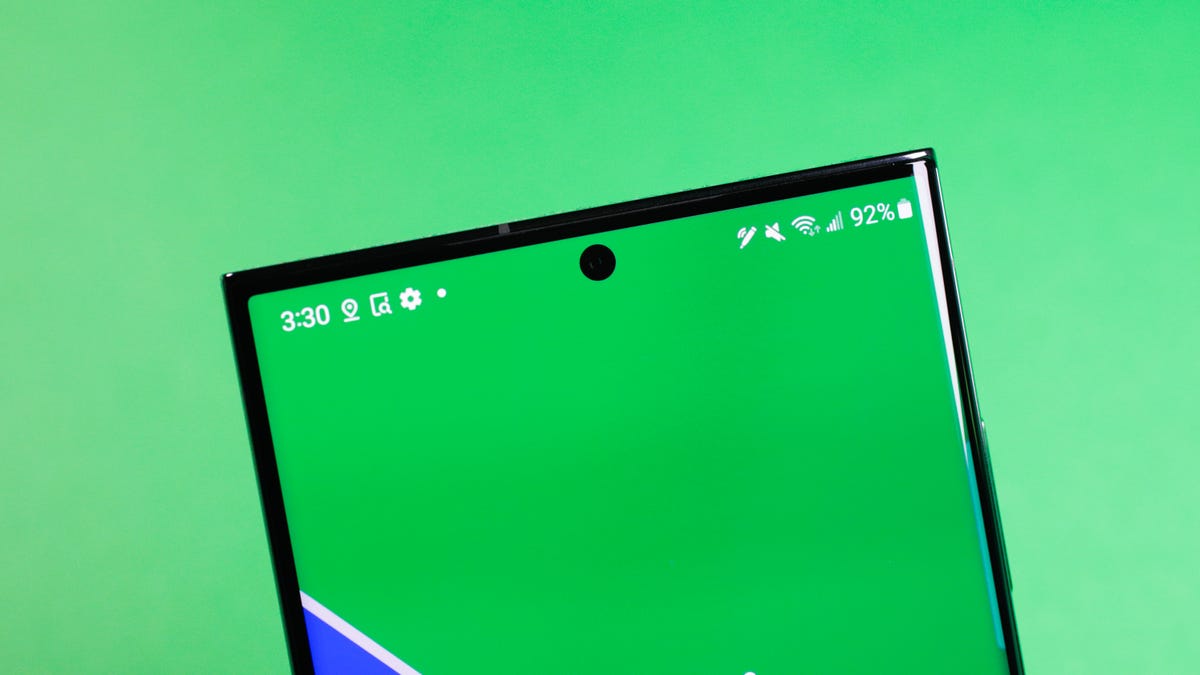

The battery that keeps going.
James Martin/CNETEven though the Ultra has a bigger battery, Apple is actually able to crank out more efficiency from its batteries thanks to iOS and its own A-series chips. Meanwhile, Android has to work with a variety of devices running different processors, so it becomes more important to have that bigger battery.
Specs and logistics aside, I’m amazed by the Ultra’s battery life, as was CNET’s mobile reporter Lisa Eadicicco when she reviewed the Ultra.
The S23 Ultra’s 200-megapixel camera
Camera quality is the most important aspect of any phone for me. I take a lot of pictures and videos for work and social media, including for my very niche tea account on Instagram. The camera on the Galaxy phones kept me in the Samsung family for a decade, so I was eager to compare the S23 Ultra’s cameras to the iPhone 14 Pro’s.
What I noticed right away is how much more saturated photos on the Ultra are. In most cases, that saturation adds a nice color boost to images and makes them stand out more. Pictures of my colorful teacups look even more vibrant on the Ultra. Sometimes, that saturation can be a bit overwhelming and makes photos look unnatural, as if there’s a filter on them. But other times, it makes colors and subjects stand out, in a good way.


The Galaxy S23 Ultra’s 200-megapixel sensor brings out details and color in this decorative teacup.
Abrar Al-Heeti/CNETThe 200-megapixel sensor on the Ultra punches up color and detail even more. A picture I took of a decorative teacup emphasizes the intricate floral design and gold trim and another image of a Klay Thompson mural shows vivid blues and yellows.
Not all moments are made for a 200-megapixel sensor, though. In another image taken outdoors, the sensor removed a few too many highlights, so it was harder to see detail and make sense of what’s going on.
Overall, I appreciate the softness and brightness of photos on the Ultra. Shadows on the iPhone are often a bit too harsh and give some images a darker overtone. An image of the sky on the Ultra will look nice and bright, while on the iPhone, there might be distracting shadows under clouds. The Ultra’s softness and brightness also make for more flattering selfies. You can adjust the iPhone’s camera settings and play around with things like contrast, tone and color temperature, and even mimic photography styles on the Galaxy (and vice versa), but I do wish the iPhone just automatically adjusted for things like shadows a little better.
The camera feature that surprised me most was Portrait mode. I think of Portrait mode on the iPhone as the gold standard. The subject is usually in perfect focus, the background is smoothly blurred and the colors are more natural looking. But I noticed there’s something the Ultra did better than my iPhone. I took a picture of my friend while she had sunglasses on top of her head, and the iPhone struggled to keep the bridge and sides of the glasses in focus, while the Ultra didn’t. It’s that small detail that shows how far Portrait mode has come on Galaxy phones. I still prefer the look of iPhone portraits because of the lower saturation, and you can catch a bit more detail in the background, which is nice.


The picture on the left was taken with Portrait mode on the iPhone 14 Pro, while the one on the right was taken with the Galaxy S23 Ultra. If you look closely, you’ll nice the iPhone blurs the bridge and sides of the glasses, while the Ultra doesn’t.
Abrar Al-Heeti/CNETDoes the Galaxy S23 Ultra beat the iPhone at video?
Given the popularity of TikTok and Instagram Reels right now, video is a huge focus for both Apple and Samsung — and also important for folks like me who take a lot of videos. Since switching to the iPhone, I’ve seen an uptick in the quality of my videos. The colors are more natural and the images sharper. Cinematic mode makes subjects pop and lends a more professional look to my content. Samsung has its own Cinematic mode equivalent, called Portrait video. It also does a great job of blurring the background, but objects and people look a little less defined than they do on iPhone.
One area where the Ultra is a clear winner is with video stabilization. Even walking down the stairs, the footage is incredibly smooth, as if you’re using a gimbal. With the iPhone, you can still sense each step being taken, and there’s a lot more movement.
The S23 Ultra’s design vs. iPhone 14 Pro
Let’s be honest: the iPhone’s camera bumps are ridiculous. The Ultra is a breath of fresh air because the cameras don’t stick out as much, so it wobbles less when you set it down.
The S Pen on the Ultra is a fun extra, though I never found myself reaching for it. There’s not much I want to write by hand, and I can just tap the screen for pretty much all functions. Still, I’m glad the legacy of the retired Galaxy Note series lives on.
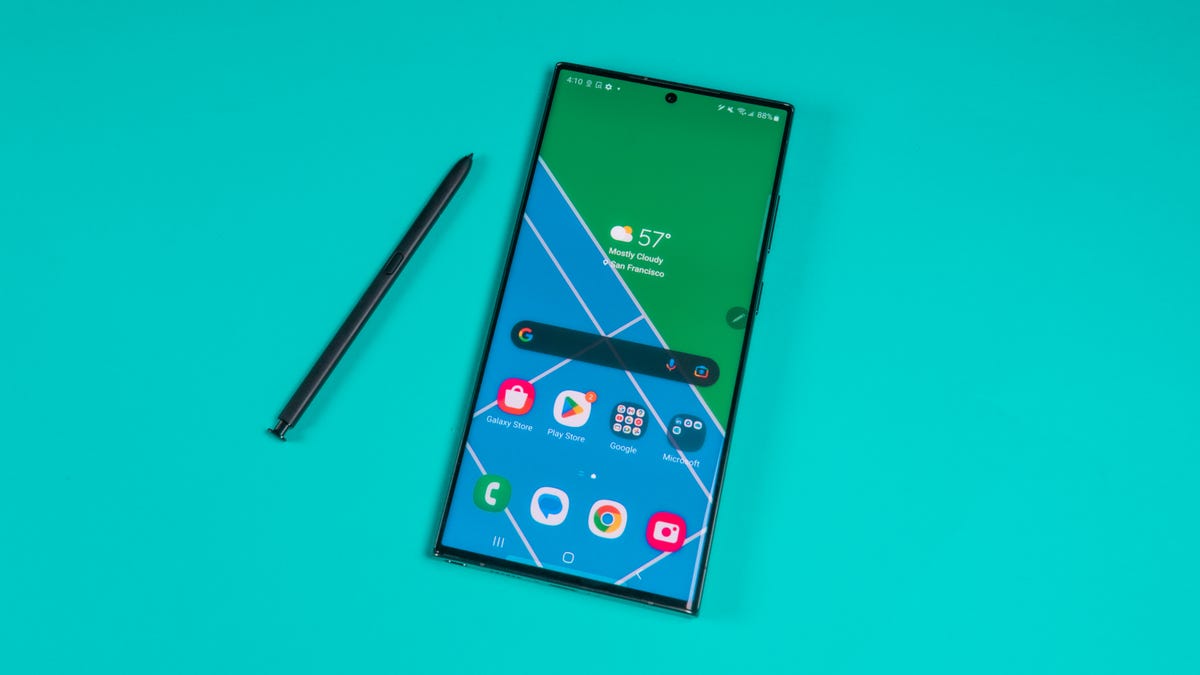

The S Pen returns on the Galaxy S23 Ultra.
James Martin/CNETThe in-screen fingerprint reader was a favorite feature of mine on my Galaxy phones, and it’s nice to have that option again while using the Ultra. I missed it when I first switched to the iPhone, but Face ID is solid enough that I quickly got over it. Unlocking both phones has been seamless.
The Galaxy S23 Ultra’s price is the same as the iPhone
The S23 Ultra is $1,200 for 256 GB of storage and is priced similarly to the iPhone 14 Pro Max with the same amount of storage. The smaller iPhone 14 Pro is $1,100 for 256GB. Whether you’re a Galaxy fan or an iPhone lover, $1,200 is a lot. But in this case, you get what you pay for.
Galaxy S23 Ultra vs. iPhone 14 Pro final thoughts


Those camera bumps on the iPhone 14 Pro feel a little excessive.
John Kim/CNETIt’s been fun to revisit a world I’ve abandoned and compare the iPhone I have now to the one I could’ve had if I’d stayed in the Galaxy family. While there are aspects to the S23 Ultra that I appreciate, like brighter and more colorful images, better video stabilization and incredible battery life, there are advantages to having an iPhone that go beyond specs that’ll likely keep me in the Apple ecosystem for a while. Features like Airdrop and iMessage have made the user experience more seamless. And I don’t know if I could give up the iPhone’s video quality for anything else.
Still, I know that if I want to take a picture that makes people’s jaws drop, I’ll likely reach for the S23 Ultra. Then I’ll wait for the look of shock when I tell them it wasn’t taken with an iPhone.
Check out the video above to see more of my experience trying out these two phones, along with some side-by-side examples of photos and videos taken on each.
Technologies
Today’s NYT Connections Hints, Answers and Help for Nov. 24, #897
Today’s Connections puzzle is kind of tough. Here are hints, answers and help for Nov. 24, #897.
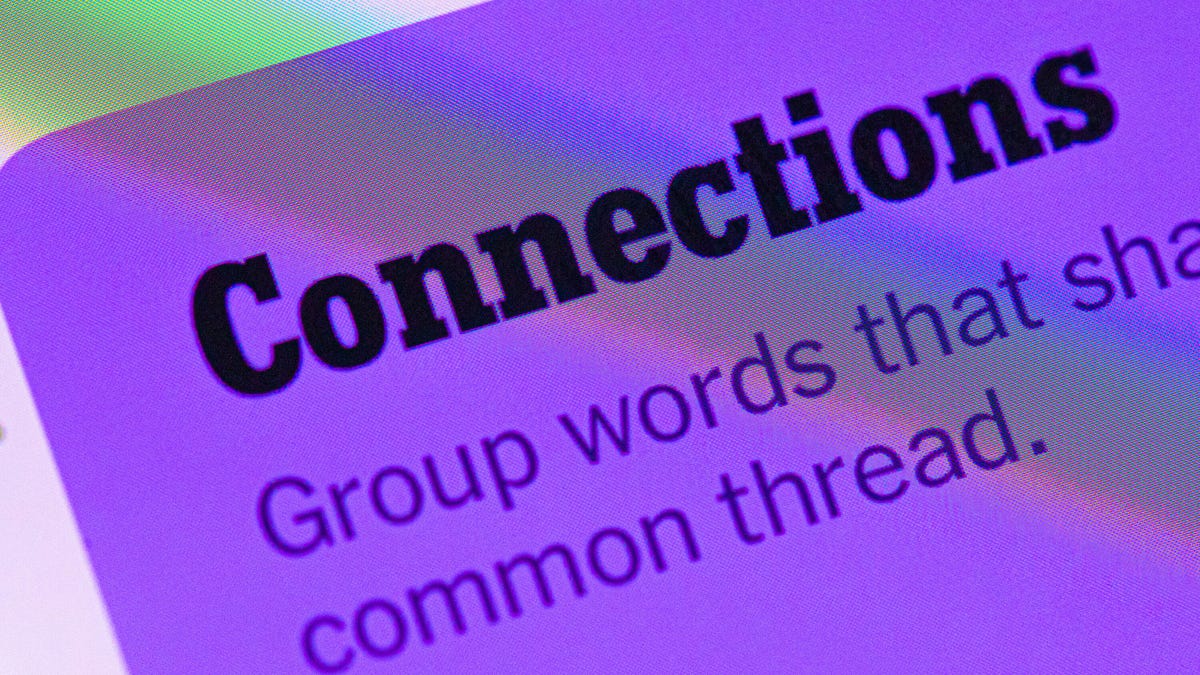
Looking for the most recent Connections answers? Click here for today’s Connections hints, as well as our daily answers and hints for The New York Times Mini Crossword, Wordle, Connections: Sports Edition and Strands puzzles.
Today’s NYT Connections puzzle is kind of tough. The purple category once again wants you to find hidden words inside other words. If you need help sorting the words into groups, you’re in the right place. Read on for clues and today’s Connections answers.
The Times now has a Connections Bot, like the one for Wordle. Go there after you play to receive a numeric score and to have the program analyze your answers. Players who are registered with the Times Games section can now nerd out by following their progress, including the number of puzzles completed, win rate, number of times they nabbed a perfect score and their win streak.
Read more: Hints, Tips and Strategies to Help You Win at NYT Connections Every Time
Hints for today’s Connections groups
Here are four hints for the groupings in today’s Connections puzzle, ranked from the easiest yellow group to the tough (and sometimes bizarre) purple group.
Yellow group hint: Like an air fryer.
Green group hint: In your vehicle.
Blue group hint: Take out your laptops, dump out your water.
Purple group hint: Like a rainbow.
Answers for today’s Connections groups
Yellow group: Small kitchen appliances.
Green group: Features of a car’s center console.
Blue group: Seen while going through airport security.
Purple group: Ending in colors.
Read more: Wordle Cheat Sheet: Here Are the Most Popular Letters Used in English Words
What are today’s Connections answers?
The yellow words in today’s Connections
The theme is small kitchen appliances. The four answers are blender, microwave, rice cooker and toaster.
The green words in today’s Connections
The theme is features of a car’s center console. The four answers are air conditioner, cup holder, radio and shifter.
The blue words in today’s Connections
The theme is seen while going through airport security. The four answers are bin, carry-on, metal detector and X-ray.
The purple words in today’s Connections
The theme is ending in colors. The four answers are infrared, marigold, stingray and ultraviolet.
Don’t miss any of our unbiased tech content and lab-based reviews. Add CNET as a preferred Google source.
Toughest Connections puzzles
We’ve made a note of some of the toughest Connections puzzles so far. Maybe they’ll help you see patterns in future puzzles.
#5: Included «things you can set,» such as mood, record, table and volleyball.
#4: Included «one in a dozen,» such as egg, juror, month and rose.
#3: Included «streets on screen,» such as Elm, Fear, Jump and Sesame.
#2: Included «power ___» such as nap, plant, Ranger and trip.
#1: Included «things that can run,» such as candidate, faucet, mascara and nose.
Technologies
Today’s NYT Connections: Sports Edition Hints and Answers for Nov. 24, #427
Here are hints and the answers for the NYT Connections: Sports Edition puzzle for Nov. 24, No. 427.

Looking for the most recent regular Connections answers? Click here for today’s Connections hints, as well as our daily answers and hints for The New York Times Mini Crossword, Wordle and Strands puzzles.
Music lovers, today’s Connections: Sports Edition has a fun green category for you. You’ll recognize some familiar phrases in the grid, I think. If you’re struggling with today’s puzzle but still want to solve it, read on for hints and the answers.
Connections: Sports Edition is published by The Athletic, the subscription-based sports journalism site owned by The Times. It doesn’t appear in the NYT Games app, but it does in The Athletic’s own app. Or you can play it for free online.
Read more: NYT Connections: Sports Edition Puzzle Comes Out of Beta
Hints for today’s Connections: Sports Edition groups
Here are four hints for the groupings in today’s Connections: Sports Edition puzzle, ranked from the easiest yellow group to the tough (and sometimes bizarre) purple group.
Yellow group hint: Not long pants.
Green group hint: Sing out.
Blue group hint: Gridiron guys who share a name.
Purple group hint: Like a law.
Answers for today’s Connections: Sports Edition groups
Yellow group: Types of shorts.
Green group: Popular arena/stadium songs.
Blue group: Football Drews.
Purple group: ____ rule.
Read more: Wordle Cheat Sheet: Here Are the Most Popular Letters Used in English Words
What are today’s Connections: Sports Edition answers?
The yellow words in today’s Connections
The theme is types of shorts. The four answers are basketball, bike, compression and gym.
The green words in today’s Connections
The theme is popular arena/stadium songs. The four answers are Eye of the Tiger, Jump Around, Sandstorm and Thunderstruck.
The blue words in today’s Connections
The theme is football Drews. The four answers are Bledsoe, Brees, Lock and Pearson.
The purple words in today’s Connections
The theme is ____ rule. The four answers are infield fly, mercy, tuck and unwritten.
Don’t miss any of our unbiased tech content and lab-based reviews. Add CNET as a preferred Google source.
Technologies
Today’s NYT Mini Crossword Answers for Monday, Nov. 24
Here are the answers for The New York Times Mini Crossword for Nov. 24.
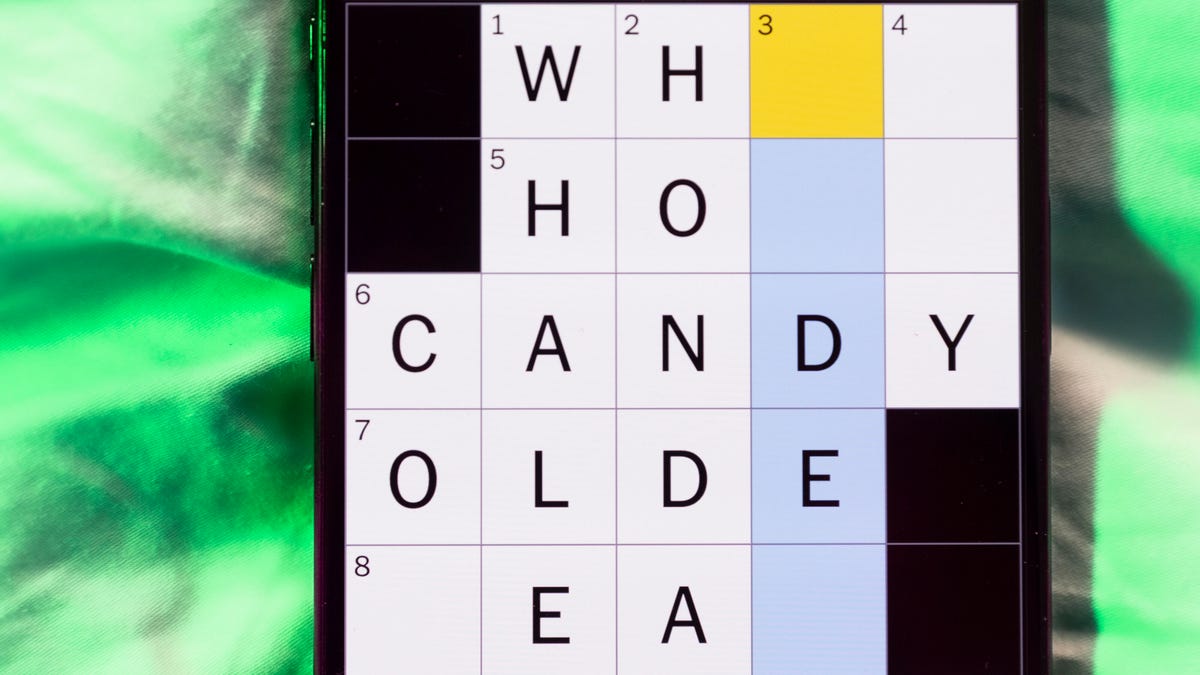
Looking for the most recent Mini Crossword answer? Click here for today’s Mini Crossword hints, as well as our daily answers and hints for The New York Times Wordle, Strands, Connections and Connections: Sports Edition puzzles.
Need some help with today’s Mini Crossword? Two down might be my favorite clue, and answer, this puzzle has ever offered. Read on for all of the answers. And if you could use some hints and guidance for daily solving, check out our Mini Crossword tips.
If you’re looking for today’s Wordle, Connections, Connections: Sports Edition and Strands answers, you can visit CNET’s NYT puzzle hints page.
Read more: Tips and Tricks for Solving The New York Times Mini Crossword
Let’s get to those Mini Crossword clues and answers.
Mini across clues and answers
1A clue: Prefix for some music genres
Answer: ALT
4A clue: Fab ___ (nickname for the Beatles)
Answer: FOUR
6A clue: Eagle’s claw
Answer: TALON
8A clue: Fab ___ (nickname for a noted University of Michigan basketball team)
Answer: FIVE
9A clue: Congregant’s seat
Answer: PEW
Mini down clues and answers
1D clue: Boat’s rear
Answer: AFT
2D clue: Shape of a cat with its legs tucked under itself
Answer: LOAF
3D clue: Flower that’s the subject of Dutch festivals
Answer: TULIP
5D clue: Wander aimlessly
Answer: ROVE
7D clue: Like many shows at the top of the Netflix queue
Answer: NEW
Don’t miss any of our unbiased tech content and lab-based reviews. Add CNET as a preferred Google source.
-

 Technologies3 года ago
Technologies3 года agoTech Companies Need to Be Held Accountable for Security, Experts Say
-

 Technologies3 года ago
Technologies3 года agoBest Handheld Game Console in 2023
-

 Technologies3 года ago
Technologies3 года agoTighten Up Your VR Game With the Best Head Straps for Quest 2
-

 Technologies4 года ago
Technologies4 года agoBlack Friday 2021: The best deals on TVs, headphones, kitchenware, and more
-

 Technologies4 года ago
Technologies4 года agoVerum, Wickr and Threema: next generation secured messengers
-

 Technologies4 года ago
Technologies4 года agoGoogle to require vaccinations as Silicon Valley rethinks return-to-office policies
-

 Technologies4 года ago
Technologies4 года agoOlivia Harlan Dekker for Verum Messenger
-

 Technologies4 года ago
Technologies4 года agoiPhone 13 event: How to watch Apple’s big announcement tomorrow





